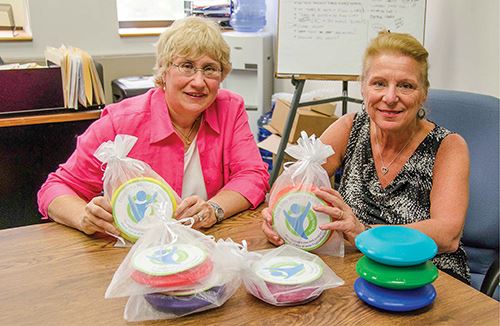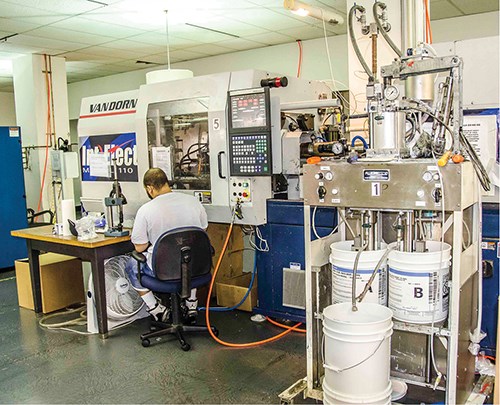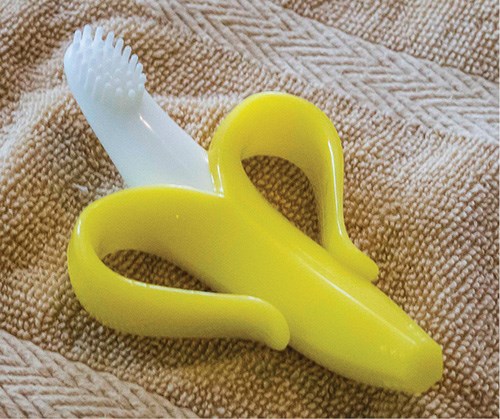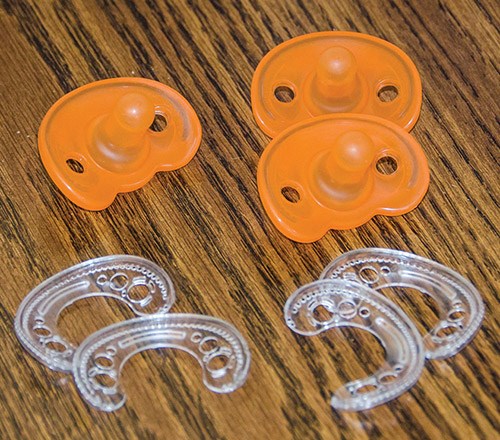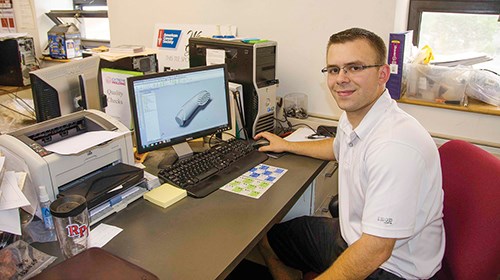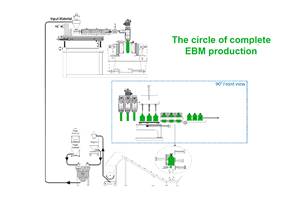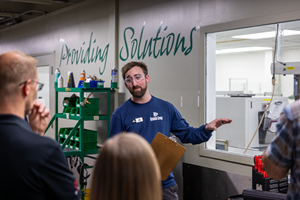Extreme Molding’s Mantra: ‘Find Your Niche and Stick to It’
On-Site: Extreme Molding LLC
For a small custom injection molder competing in today’s global market, Lynn Momrow-Zielinski has two pieces of advice: 1) Develop a business plan and stick to it. 2) Find a technical and/or market niche and stick to that, too.
For a small custom injection molder competing in today’s global market, Lynn Momrow-Zielinski has two pieces of advice:
•Develop a business plan and stick to it.
•Find a technical and/or market niche and stick to that, too.
“The world does not need another injection molder of commodity plastics. The key to business success as a domestic injection molder today is business focus and technical specialization,” she told an audience of molders at last January’s Molding 2013 Conference in New Orleans. By practicing what she preaches, Extreme Molding LLC, the company she co-founded and co-manages with Joanne Moon, achieved profitability within 18 months of its opening in 2002 and has achieved double-digit growth in most (non-recession) years since then.
Momrow-Zielinski is a straight talker who’s not shy about making no-nonsense pronouncements about the economic pressures on a small molder facing a world of competitors, about domestic vs. overseas pricing, molding market trends, achieving business focus, winning and managing customers, and buying molds abroad; the place of rapid prototyping, social media, and ISO certification; and the growth of liquid silicone (LSR) molding and overmolding.
Having built a business from scratch—one of the few female-owned plastics molding companies—Momrow-Zielinski speaks from hard-earned experience. A native of upstate New York, she has two engineering degrees (chemical and industrial) from Rensselaer Polytechnic Institute in Troy, N.Y. She was a development engineer for the plastics operations of Mobil Chemical for four years and then operations manager and global technical marketing manager for GE Silicones for eight years. She then became general manager of Canton Bio-Medical, a maker of silicone and other rubber products in Poestenkill, N.Y., which was acquired in 2000 by Saint-Gobain Performance Plastics, where she became the worldwide general manager of the Laboratory Products Business Unit. That’s how she met her future business partner.
Joanne Moon had pursued an MBA from Seton Hall University in New Jersey and had been a product supervisor for L’Oreal-Lancôme cosmetics and then plant manager and director of manufacturing for CR Bard, a medical products company. After 13 years there, she left to join UroMed, a medical device startup company, and then in 2000 became worldwide general manager of healthcare products for Saint-Gobain Performance Plastics.
When they met as managers at Saint-Gobain, the two women found that they shared a particular ambition. Moon had always wanted to run her own business, and Momrow-Zielinski came from a family-owned business in Christmas trees, firewood, and tree service. They decided to strike out on their own and spent a year formulating a business plan. They resolved to accept no outside investors and no startup money from family. Instead, Moon took out a second mortgage on her home. While scouting for locations, they came across the Watervliet Arsenal, run by the U.S. Army in Watervliet, N.Y., just across the Hudson River
from Troy. The Arsenal’s newly formed Business & Technology Partnership was looking to fill vacant space with private businesses.
Extreme Molding became the first major non-military manufacturing tenant there, occupying part of the third floor of a building devoted to Army machine shops. The U.S. government paid for site preparation and provides round-the-clock security and fire and emergency services.
Why the name Extreme Molding? “We do wacky things that you might say shouldn’t be molded,” says Momrow-Zielinski. “We’ve used intrusion molding to make parts greater than the shot capacity of our machines. Challenging materials and complex designs are our specialty. We take on tough jobs that other molders won’t do. We work with complex molds with lots of actions and undercuts. We tinker with materials to accommodate such molds—such as going to a lower durometer that can be pulled over the undercuts.”
The two managing partners had already decided that their new firm would focus on business areas they knew and liked—healthcare for women and infants and LSR molding. Their first machines were a pair of brand-new Toshiba all-electric presses, one of 65 tons for thermoplastics and a 45-tonner for LSR molding. They chose all-electrics for their energy efficiency, quietness, and “state-of-the-art” precision, which is especially important in LSR molding, says Momrow-Zielinski, who is the firm’s top technical officer. She recalls her initial difficulty in convincing the vendor to sell machines to her. “They told us, ‘We never shipped to a woman before.’”
Since then, Extreme Molding has acquired four more new all-electric presses from Toshiba and Sumitomo Demag, as well as five used machines (Arburg, Engel, Milacron, and Van Dorn). All told, seven of the 11 machines are outfitted for LSR and four for thermoplastics. They span a range of 45 to 110 tons. The firm also has a few small vertical compression presses for molding silicone and other rubbers.
Besides LSR, Extreme Molding uses TPEs, polycarbonate, Tritan copolyester from Eastman Chemical, and occasionally more exotic resins like fluoropolymers, PEEK, PEI, or LCP. The firm employs more than 40 people, many of them young engineering graduates from Rensselaer Polytechnic. It operates 24/5 or 24/7 and business is growing steadily towards $5 million.
Currently occupying 15,000 ft2, Extreme Molding plans to take over another 3000 ft2 in a separate building in July.
CHOOSE YOUR NICHE
“Almost all domestic molders have been forced to develop specialized capabilities in the last 10 to 15 years,” says Momrow-Zielinski. “You have to have something you’re known for and do better than most everyone else—or you can’t stay in this business. Our claim to fame is overmolded combinations of materials in applications for female-oriented and pediatric healthcare.”
.
“We’re very transparent with our customers,” says Momrow-Zielinski. We go over our quotes with them in detail. We take a personal interest in their business.
“It’s also our policy that the customer owns and pays for the mold. On the other hand, we are willing to invest a few thousand dollars out of our own pocket for maintenance over the life of the tool.”
In choosing healthcare as a specialty, Moon and Momrow-Zielinski not only built on what they knew, but they saw it as offering higher margins than other molding sectors and being less vulnerable to overseas competition. It also is more recession-proof than many other markets.
The co-owners saw LSR, in particular, as an attractive specialty because of the relative scarcity of knowledge in this area. “Experience in designing with silicone is rare,” says Momrow-Zielinski, “and even fewer designers know about overmolding, which is more than 50% of what we do.”
Moon and Momrow-Zielinski see plenty of potential in LSR molding: “As TPE material pricing continues to rise, more customers are willing to try silicone for soft-touch overmolding,” says Momrow-Zielinski. TPE prices, she says, have risen north of $3.50/lb, while LSR prices are actually going down, currently around $4.50/lb in high volume. Also, translucent colors are in fashion, which is an advantage for LSR over many TPEs.
LSR/LSR overmolding also is becoming more popular, says Momrow-Zielinski, and Extreme Molding has three such projects under way. But it’s especially challenging, she acknowledges, because of the difficulties of getting the shrinkages balanced and constraining the first-shot material during overmolding. “Silicone is inherently squishy and it wants to move around.”
For the future, Moon and Momrow-Zielinski see emerging areas of potential growth, such as overmolding of embedded electronics in applications such as RFID. Secondary operations like assembly, packaging, and fulfillment (direct-to-store shipment worldwide in retail packaging) are also growing areas of opportunity. The firm has a Class 100,000-rated clean environment for assembly and packaging. These secondary operations are the main focus of the upcoming expansion this summer.
Extreme Molding uses a two-step transfer/insert process to make overmolded parts. The firm considered two-shot molding but decided against the higher investment in machinery and tooling.
Extreme Molding uses rapid prototyping services provided by Spectrum Plastics Group in Westminster, Colo. (spectrumplasticsgroup.com), and there is a stereolithography machine available at the Arsenal on a coop basis. But Momrow-Zielinski does not believe it’s cost-effective for most molders to buy their own prototyping equipment.
A MESSAGE TO TOOLMAKERS
One aspect of Extreme Molding’s business plan was forced to change under pressure of overseas competition. Explains Momrow-Zielinski, “We often bid against China and we are told we are quite competitive—usually within 10% of their part price when transportation and other fees are added in. We rarely lose jobs to China on piece price. Our biggest challenge was overcoming mold-price differences, which is why we now offer the option of sourcing molds in China.”
Momrow-Zielinski prefers the quality of domestic molds, but customers forced the issue. “We couldn’t get some business because of mold costs. Domestic molds can cost three to four times more than Chinese-built tools. Originally it was small entrepreneurial customers that couldn’t afford U.S. tools. But now even giant corporations want cheap tools.”
Extreme Molding developed a relationship with a U.S. mold broker who had formerly run his own molding business. “He knows the moldmaker in China and he handles the logistics for us.”
Even so, there are tradeoffs in purchasing overseas tooling. The first Chinese mold came into the Extreme Molding shop in March. “It looked old right out of the crate,” says Momrow-Zielinski, who speculates that the reason maybe Chinese use of recycled steel and heaters. “We had a lot of problems and had to make a lot of modifications to get it to run consistently. But customers seem willing to spend the money after the mold arrives to get it into shape. And we have another one on the way.”
Nonetheless, she would be especially wary of buying a Chinese tool for LSR molding. “Where U.S. moldmakers use automated high-speed machining, the Chinese seem to do more work by hand.
That leads to more variability, which runs more risk of flashing where low-viscosity LSR is concerned.”
Momrow-Zielinski sees a message in all this for domestic moldmakers: “Our moldmakers here all want to build Mercedes-Benz molds, not a Chevy mold. But not every customer needs or can afford a
Mercedes-Benz. There has to be a shift in mentality or moldmakers here will lose more and more business.”
Apart from tool costs, Momrow-Zielinski sees no insurmountable challenge in competing with China. “Almost all U.S.-based customers will pay up to a 20% premium over Chinese piece price with no questions asked. That’s because of the greater ease of doing business with a domestic molder, shorter lead times, lower shipping costs, better traceability of materials and parts, and the “Made in the USA” marketing advantage. But, she cautions, “Almost all higher-volume U.S. customers will find an overseas supplier if the domestic part price has a 50% or higher premium.”
QUALITY & SOCIAL MEDIA
Extreme Molding does 100% part inspection as a matter of course. It is also QRS and FDA compliant, but not ISO certified. According to Momrow-Zielinski, “For most markets, molder ISO certifications are not as critical as they were in the past, so they’re not worth the cost. It’s enough to be ‘ISO-ready,’ as we are, without going through the audit.”
However, she adds this caution: “If your quality is not good, the word spreads faster than ever before, via email, blogs, and tweets.” The reverse is also true, as satisfied customers post blogs complimenting her firm on its service. She adds that Extreme Molding gets most new business nowadays through its website, driven by buying Google search keywords like “overmolding” and “silicone molding.” The highly popular Baby Banana was an example of unsolicited business from an entrepreneur who found Extreme Molding through an internet search.
Related Content
How to Optimize Injection Molding of PHA and PHA/PLA Blends
Here are processing guidelines aimed at both getting the PHA resin into the process without degrading it, and reducing residence time at melt temperatures.
Read MoreGet Color Changes Right In Extrusion Blow Molding
Follow these best practices to minimize loss of time, material and labor during color changes in molding containers from bottles to jerrycans. The authors explore what this means for each step of the process, from raw-material infeed to handling and reprocessing tails and trim.
Read MoreMedical Molder, Moldmaker Embraces Continuous Improvement
True to the adjective in its name, Dynamic Group has been characterized by constant change, activity and progress over its nearly five decades as a medical molder and moldmaker.
Read MoreMultilayer Solutions to Challenges in Blow Molding with PCR
For extrusion blow molders, challenges of price and availability of postconsumer recycled resins can be addressed with a variety of multilayer technologies, which also offer solutions to issues with color, processability, mechanical properties and chemical migration in PCR materials.
Read MoreRead Next
See Recyclers Close the Loop on Trade Show Production Scrap at NPE2024
A collaboration between show organizer PLASTICS, recycler CPR and size reduction experts WEIMA and Conair recovered and recycled all production scrap at NPE2024.
Read MoreFor PLASTICS' CEO Seaholm, NPE to Shine Light on Sustainability Successes
With advocacy, communication and sustainability as three main pillars, Seaholm leads a trade association to NPE that ‘is more active today than we have ever been.’
Read MoreMaking the Circular Economy a Reality
Driven by brand owner demands and new worldwide legislation, the entire supply chain is working toward the shift to circularity, with some evidence the circular economy has already begun.
Read More

